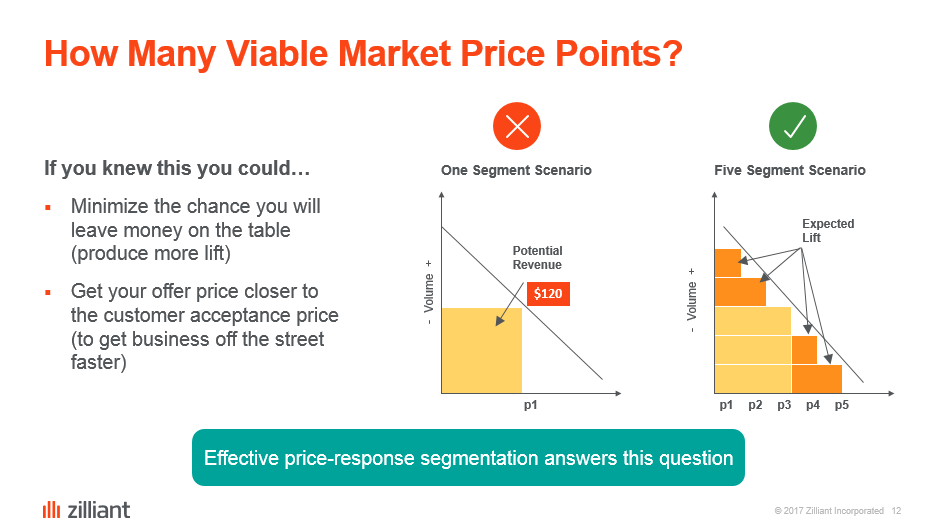“Will a simpler price strategy reduce negotiation time?”
Shortly after my Professional Pricing Society webinar last month this was one of the questions I received. The question was posed by someone wrestling with a common philosophical pricing question: Should a company move to a simpler price offering – basically an omni-channel price with the hope that this would reduce processes and negotiation and thus improve sales volume?
Another way to pose the same question is, “Should we have a one-price-fits-all approach?” Another equally valid phrasing might be, “Should we take the Postal Service approach where we deliver mail anywhere for one price?”
One-price-fits-all is an effective way to give away profits, as the notion that profit loss is made up on volume is a commonly-held pricing myth. (Consider this: Which group makes more money, the Post Office or Fedex? Precisely.)
The bottom line is this: Simple pricing will always leave money on the table.
Why? Because it ignores a core consideration — price sensitivity. When companies confuse simpler pricing with market-aligned pricing, the five major factors I mentioned in my last post go unaddressed: scalability, market agility, staleness of price, access to good market data, and gaining sales buy-in to price guidance. More viable price points in the market, not fewer, is what drives lift and allows companies to close deals faster. As the below chart illustrates, fewer price points reduces profits from the same sales, and prices you out of some opportunities.

The rationale in the question posed above was whether simpler pricing would result in more closed business, since the pricing is simpler and theoretically more likely to be accepted. The problem with the simplified price points approach is that it unnecessarily sacrifices profits on some deals while the volume increase required to make up lost profits seldom, if ever, is sufficient to overcome the combined effects of all the price reductions. And of course, micro-markets don’t experience the same price pressures in the same way, at the same time, so your new simplified pricing quickly grows stale and irrelevant.
In my book, “Stop Racing in a Blindfold!” I talked to this same topic:
Company profitability revolves around this … basic premise – your business can’t get where you want it go if it is leaking profit. Cost cutting and efficiency gains are harder and harder to come by due to more than 30 years of successful analytical work and process re-engineering aimed at streamlining the supply side of business. Still, we find almost every business under some stress financially. In our globally competitive market, global economic boom or bust, we have increasing price volatility. Raw materials costs and market changes can wreak havoc with your pricing.
The one-size-fits-all or across-the-board price decrease is incredibly destructive. One-size-fits-all price decreases can also lead to or accelerate price wars, and I’ll guarantee you 100 percent market acceptance. … clearly if some of your customers are not asking for a price decrease, then unilaterally lowering your price to all customers is not a profit enhancement technique. Similarly, if you are trying to grow market share by lowering your prices, this one-size-fits-all approach will leak fuel on the track because you are treating all customers the same, and some channels will not respond with future greater demand.
Conversely, raising prices, even in a rising economy, via a one-size-fits-all process is a very hard sell with your customers (and for that matter with your own Sales team). As proof of the challenge, we regularly see that announced price increases of 5% yield only 1-3% or about 1/3 to 2/3 of the increase (let’s call this the price increase “stickiness factor”).
Why is this true? Because the whole underlying premise of announced price increases is wrong headed. Across-the-board price increases – whether they are for a whole company’s products or a product family – aim to raise the average selling price by treating all customers the same. But your customers are not all the same! As a matter of fact, you probably don’t have an ‘average customer.’ The problem here is that you end up trying to raise prices on customers paying more than the average by the same percentage as customers paying less than the average. You essentially can ‘punish’ your above average paying customers and your relationship with them via this approach.
What are your thoughts? I’d welcome your commentary: Jim.Vaughn@zilliant.com
